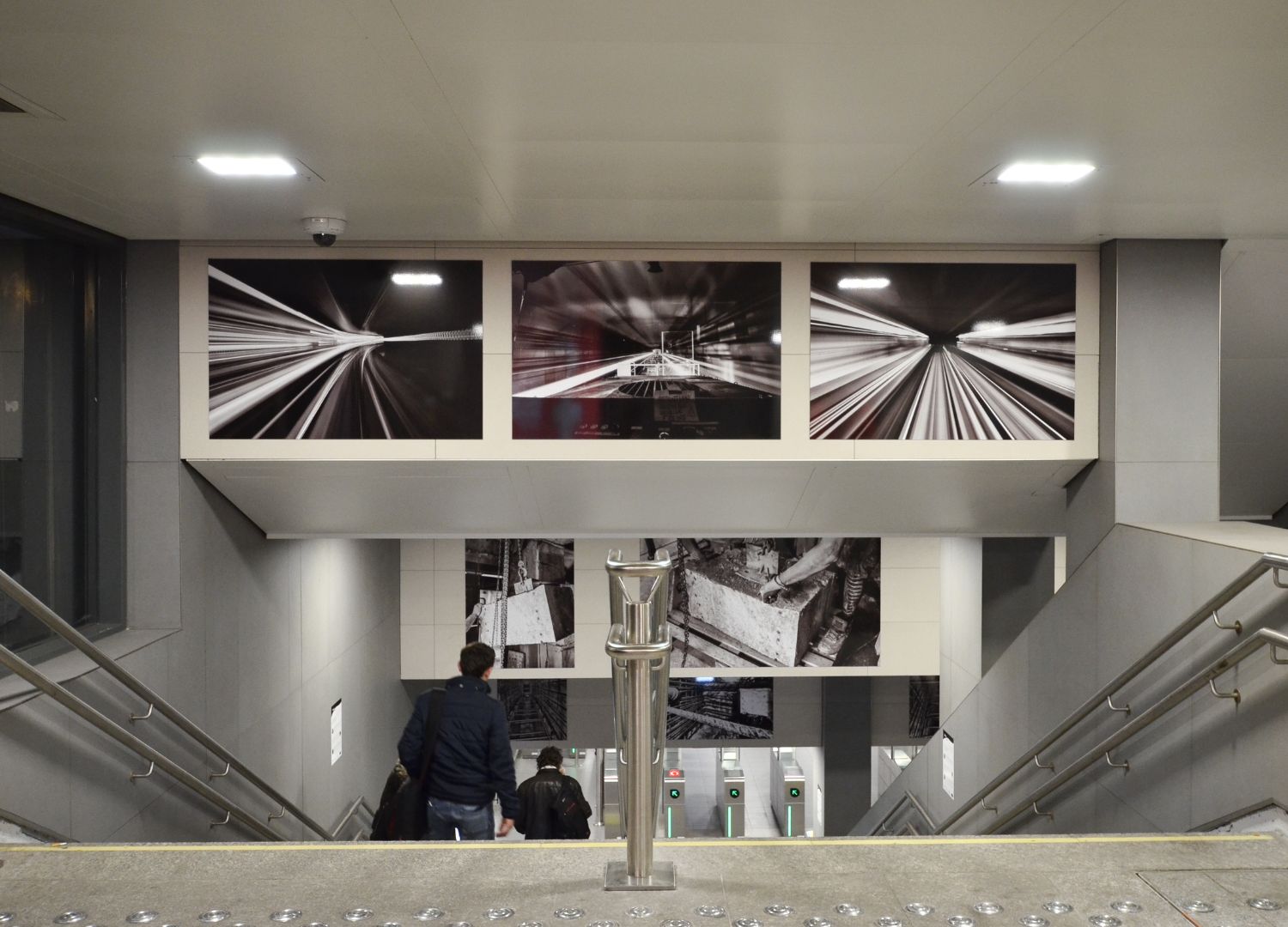Beautiful surfaces and where to find them
Ceramic surfaces are everywhere. Metro stations, airports, train stations: all places set in between mobility and travel, are mainly covered up by ceramic surfaces. Here is why..

We have asked Lea Ceramiche to tell us about the buildings, architectures and residences where ceramic is habitually a surface reference. Lea Ceramiche, as part of the Panariagroup, is one of the brands involved in public and private projects as a main supplier. The new Grand Paris Express, the transport web that will add 200 kilometers of trails to the Paris city metro by 2030, will be covered by 110.000 square meters of Lea Ceramiche products.
Exactly half of the entire surface of the biggest infrastructural building work in Europe.
Resistance, safety and durability
We need a little digression to better understand how ceramic is such a hit in public spaces. Wherever there is a big transit of people, let’s say even a couple of million human beings per day like in any metro line of a big international city, there are resistance, durability, sanitary, and safety issues. Ceramic in this case is the best choice because of its intrinsic characteristics: a non-porous, easy sanitizable and resistant surface adding incredible aesthetic qualities to any space.
On top of it, Lea Ceramiche has always been a cutting-edge brand for formal and functional research, delivering today’s sustainable products aimed at sophisticated architectural and interior design projects.

Certifications attesting a smart choice
For the Grand Paris Express, as for any highly populated and highly technological public project, it is necessary to provide an industrial material with very high resistance and technical performance. Furthermore, the essential condition for choosing the supplier partnerships is that the system of materials proposed, i.e. the combination of screed, glue, ceramic slab, cement joint and expansion joints, obtains the ATEx (Appréciation Technique d’Expérimentation) certification.
It is a technical evaluation procedure on innovative products or solutions, certifying the materials are recognized as compliant with standards through an authentication document issued solely by the Technical Scientific Construction Center (CSTB). For the specific order, therefore, Lea Ceramiche participated in the tender together with a consortium of other companies – Mapei, CS Group and Pedrazzini – which will supply the remaining necessary materials.

Lea Ceramiche it’s not new to metro stations
The Arts-Loi Station of Metro Bruxelles is another reference testifying the importance of ceramic surfaces in the design of public spaces. The Brussels metro stations have been designed in different styles, according to their era of construction. For the Arts-Loi station, located exactly in the center of the city under the intersection between Rue de la Loi and Avenue des Arts, the restyling plan involved the inclusion of Lea Ceramiche’s new generation Slimtech ceramic slabs as a large-scale covering part of the walls.
In the Arts-Loi station, you will see it in two different colors: White Cloud and Cool Rain, which gives the walls and spaces cleanliness, modernity and character. The large Slimtech slabs, thin in thickness and low in weight, are also made with lower consumption of water and raw materials, reducing CO2 emissions which, since September 2022 are fully compensated during the entire lifecycle: they are a sustainable choice.

From huge cities to a small island
One of the most impressive characteristics of ceramic surfaces is flexibility. Ceramic slabs may be used really everywhere, from very normal people’s houses to train stations, ending up of course in high-end hospitality structures, as the Idyllic Concept Resort, a project located on a small tropical island in Thailand.
The architectural complex was born from the perfect balance between internal and external areas, as often happens to architectures built in these latitudes. The dialogue between the interiors and the beautiful and suggestive surrounding landscape enhances the meaningful relation that Thai people have with nature.

A communicating ceramic surface
At Idyllic Concept the choice of floor coverings is inspired by natural elements. In the lobby, Thanon Studio selected Waterfall by Lea Ceramiche, a porcelain stoneware collection that reinterprets a rocky and ancient stone such as slate in a realistic and physical way.
By recreating the iridescent effects typical of sedimentary rock stones on the stoneware surface, Waterfall records textures, irregularities and color variations as precise expressions of the passage of time.

A dialogue with space and people
The gray base colors mimic the natural oxidation process of stone, a continuously transforming material that changes color, shape and structure, adapting to the evolution of natural phenomena. With the inclusion of other types of stones such as Brazilian quartzites, the Lea Ceramiche research laboratory has arrived at a high aesthetic definition, a graphic balance giving the material peculiar reflection capabilities.
In this case, the ceramic surface becomes more rational, both from an economic and maintenance point of view as long as the aesthetic one, for an interior space that manages a constant dialogue with evergoing people, communicating the welcome and abundant presence of nature and inviting to immerse oneself in the atmosphere.











